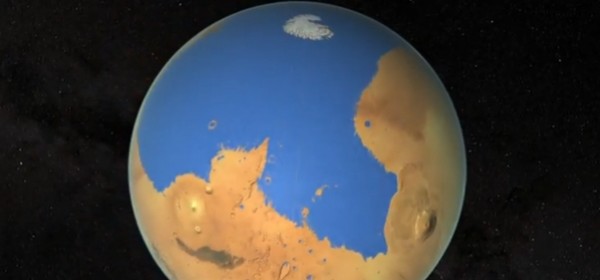When the Red Planet was partly blue

Astronomers have found the strongest evidence yet that ancient Mars had a massive ocean for millions of years— an indication that the Red Planet once had everything necessary to support life. Shortly after Mars formed 4.5 billion years ago, NASA scientists say, the planet was wet, with enough water to cover the entire planet to a depth of about 450 feet. Most of the water, however, was concentrated in an ocean covering Mars’ northern hemisphere. That ocean—slightly larger than Earth’s Arctic Ocean—reached depths of about a mile.
The astronomers arrived at this conclusion through an analysis of water molecules in Mars’ current atmosphere. They measured two slightly different forms of water: typical H20 and HDO, a naturally occurring variation in which one hydrogen atom is replaced by a heavier version, called deuterium. When Mars’ atmosphere thinned and the surface water evaporated into space, deuterium concentrations increased over time. By analyzing how quickly this process occurred, scientists could infer that Mars lost about 87 percent of its water over 4.5 billion years. “The existence of a northern ocean has been debated for decades, but this is the first time we have such a strong collection of data from around the globe,” says Michael Mumma, principal investigator NASA’s Goddard Center for Astrobiology. “Our results tell us there had to be a northern ocean.”

 Print
Print